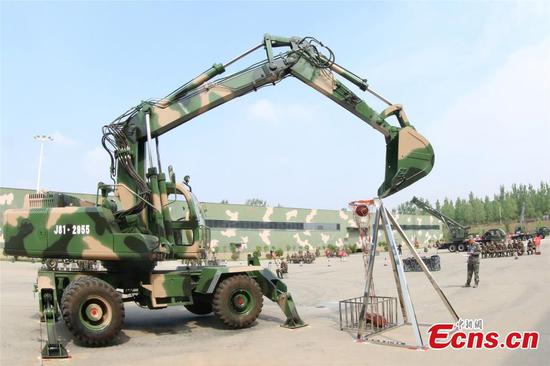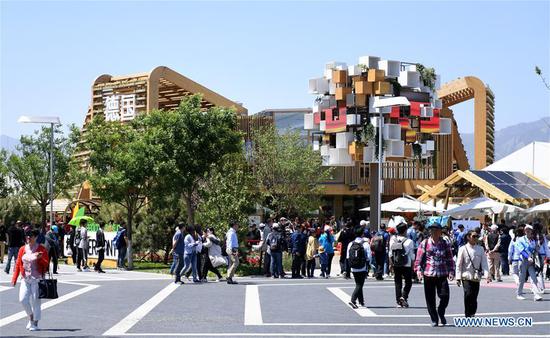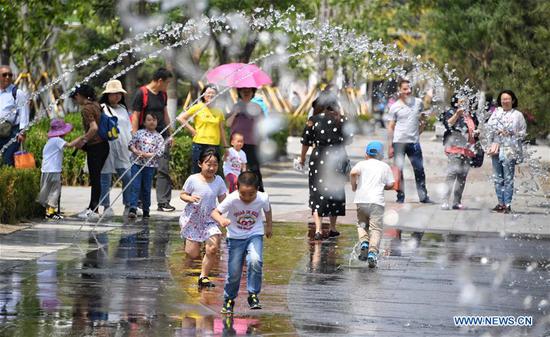Nation supporting farmers at home, seeking new sources abroad
Farmers in Northeast China are striving to expand soybean planting area during the spring sowing season, in response to the country's call to revitalize the soybean industry and reduce reliance on U.S. soybean imports amid the escalating China-U.S. trade war.
U.S. soybean futures fell on Monday to hit their lowest in more than 10 years, after China hit back at U.S. President Donald Trump's latest tariffs on $60 billion worth of U.S. goods on Monday, escalating the ongoing trade war.
China's duties, ranging from 5 percent to 25 percent, are scheduled to take effect June 1. More than 5,000 products are affected, including beef, fruit, vegetables, coats, refrigerators and furniture.
China slapped a 25 percent tariff on U.S. soybeans in July last year as part of a tit-for-tat trade war between the world's two largest economies.
U.S. soybean farmers are "frustrated" with the escalating situation. "We cannot withstand another year in which our most important foreign market continues to slip away and soybean prices are 20 to 25 percent, or even more, below pre-tariff levels," said John Heisdorffer, chairman of the American Soybean Association in a statement published on Monday.
"What that means for soybean growers is that we're losing. Losing a valuable market, losing stable pricing, losing an opportunity to support our families and our communities," said Davie Stephens, president of the association, in the statement.
China's imports of U.S. soybeans for the first quarter of 2019 came to 16.75 million tons, down 14.4 percent from the same quarter last year, according to a Reuters report.
Experts said that given the unstable external situation, China will seek multiple import sources such as Russia and increase domestic output of soybeans.
The soybean planting area has increased significantly in northern China this year, especially in North China's Inner Mongolia Autonomous Region and Heilongjiang Province, according to a report by cctv.com on Tuesday that cited data from the Ministry of Agriculture and Rural Affairs.
According to the report, soybean planting area in Hailun, a city in Heilongjiang Province, also known as "home of domestic soybeans," reached 2.6 million mu (173,333 hectares) this year, an increase of 600,000 mu compared with last year.
"The main reason for the increase in soybean planting area is that the country has proposed a soybean revitalization plan, and farmers have seen a policy dividend. The market price is also good," Wang Baofeng, vice mayor of the city said, cctv reported.
Jiao Shanwei, editor-in-chief of cngrain.com, told the Global Times on Tuesday that China has been improving domestic soybean production to reduce its reliance on foreign markets in the past year, especially after the outbreak of a trade war between China and the U.S..
Subsidies for soybean farmers could be as much as 340 yuan ($49.4) per mu, about 200 yuan higher than those offered to corn farmers, according to media reports.
China also unveiled a soybean revitalization plan at the beginning of the year. It aims to expand soybean planting area to 140 million mu by 2020, and to 150 million mu by 2022. It also aims to add about 10 million mu in 2019.
China is also diversifying import sources to include Russia, Brazil, Turkey and other Asian countries, Jiao said.
In the second and third quarter of this year, China will mainly import soybeans from South America countries. Also, outbreaks of African swine fever in China have curbed demand for soybeans in the form of animal feed, so supplies will remain stable, experts said.


















































